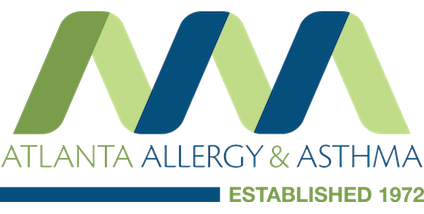Back-to-school preparations will certainly look different this year. Schools are facing major challenges for the 2020-2021 school year as they prepare to reopen during the pandemic. Many school systems are encouraging students to visit their pediatrician, and specialist if applicable, prior to school and/or sport start dates.
If your child has nasal allergies, food allergies, or asthma, now is the time to schedule an appointment with your allergist. Make sure treatment plans are in place and that your food allergy and asthma emergency care plans are updated. These plans are the best way to communicate your child’s medical needs to the school. With everything they are dealing with this year, written plans will be essential to help keep your child safe.
Here are some additional reasons why school systems are asking parents to connect with their healthcare providers this summer:
- The better your child’s baseline health, the better they will be able to fight any infection or stressor that comes their way.
- It is vital that your child’s vaccines are up to date. Vaccine-preventable illnesses like flu or measles not only make you feel miserable, they rob your immune system of the ability to fight other infections, including COVID-19.
- Chronic medical conditions like asthma, allergies, or diabetes must be optimally managed so that your child’s baseline health is the best that it can be.
- If your child has asthma, make certain their symptoms are well controlled and that they are taking appropriate maintenance medications daily. Medications may need to be adjusted as your child grows. You will need to evaluate your child’s individual school for possible asthma triggers such as chalk, dry erase boards, fragrances, and allergic triggers for children with allergic asthma. Note that during the COVID-19 pandemic, schools might be using stronger disinfecting solutions and increasing the frequency of cleaning. This could trigger an asthma attack in some children.
- If your child has a food allergy now is a good time to visit the allergist to confirm your child’s risk for anaphylaxis. Depending on the food allergy, some children may outgrow it over time. Check the expiration dates on your injectable epinephrine and be aware of any recalls or shortages in products. Note that per CDC recommendations during the pandemic, children may be allowed/required to eat breakfast and/or lunch in their classrooms to avoid mixing of groups in common areas. This has become a concern for food allergy families as food particles may remain in the classroom causing a risk for your child. Work with your allergist and school to provide a safe environment for your child.
- For children with allergies, make sure your child’s allergy symptoms are well controlled at the start of the school year. Continue maintenance therapies with either medications or allergen immunotherapy. Be aware of allergy triggers at school such as mold exposure from bathrooms and leaky pipes, especially if some buildings have been closed-up for a while. Pet dander can be transported to the school on the clothing of classmates and teachers triggering a reaction in your child. To improve ventilation during the pandemic, windows may remain open allowing pollen and other airborne allergens to drift into the classroom.
- If your college-bound child is on allergen immunotherapy (allergy shots or drops), contact your AA&A office for guidance on continuing the therapy while away at school.
What can we all do to help in the fight against COVID-19?
- Stay home when appropriate – follow CDC guidelines for symptom assessment and time frame for quarantine based on testing or exposure to a COVID-19 positive individual.
- Practice hand hygiene and respiratory etiquette – teach and reinforce handwashing for at least 20 seconds. When soap and water is not available, use hand sanitizer with at least 60% alcohol. Cover your mouth and nose with a tissue when you cough or sneeze or use the inside of your elbow. Throw used tissues in the trash and immediately wash your hands/use sanitizer.
- Reinforce the use of cloth face coverings - Face coverings should be worn by staff and students (particularly older students) as feasible and are most essential in times when physical distancing is difficult. Cloth face coverings are meant to protect other people in case the wearer is unknowingly infected but does not have symptoms.
- Know when you can safely return to school or work – when you can be around others depends on different factors for different situations. Follow all CDC guidelines based on your situation.
Additional CDC recommendations that schools are asked to consider to help slow the spread of coronavirus:
- Adequate supplies to support healthy hygiene behaviors
- Signs and messaging to continually reinforce everyday protective measures to stop/slow the spread of Covid-19
- Limit gatherings (assemblies, programs) to smaller groups
- Maintain healthy environments through:
- Cleaning and disinfecting
- Discouraging shared objects that cannot be easily cleaned or disinfected
- Ensuring ventilation systems operate properly and allow for increased circulation of outdoor air as much as possible
- Taking steps to ensure all water systems and features (sinks, fountains) are safe to use after a prolonged facility shut-down, recommend students bring their own water to minimize risk.
- Modifying physical layouts to create social distance. Seating 6 feet apart, students face in same direction rather than face each other, physical barriers where possible. Also strive to create distance on school buses when possible.
- Close or modify communal spaces or stagger use. Clean and disinfect in between uses.

